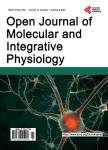Discrimination between upper versus lower airway components to the rise of total airway resistance measured by Pennock’s method after nasal irritant challenge
Discrimination between upper versus lower airway components to the rise of total airway resistance measured by Pennock’s method after nasal irritant challenge作者机构:Clinic of Anaesthesiology and Emergency Medicine Jessenius Faculty of Medicine Comenius University Martin Slovakia Department of Pathophysiology Jessenius Faculty of Medicine Comenius University Martin Slovakia
出 版 物:《Open Journal of Molecular and Integrative Physiology》 (分子和综合生理学期刊(英文))
年 卷 期:2013年第3卷第3期
页 面:104-110页
学科分类:1002[医学-临床医学] 100214[医学-肿瘤学] 10[医学]
主 题:Airways Resisatnce In Vivo Pennock’s Method
摘 要:Terminals of the trigeminal afferents innervating nasal mucosa are called gate keepers, since these fibres detect substances entering the airways. Trigeminal excitation by irritants initiates airway defensive mechanisms, and it is also attributed to the influence of lower airways resistance in a term of nasobronchial reflex. This phenomenon is frequently under debate, because some investigators were unable to confirm its existence. The aim of our study was to determine, whether pharmacological approach could be useful to reach high accuracy and better interpretation of the data obtained by Pennock’s method. Pennock’s method, which is frequently used to measure airway resistance in vivo (Raw) in fact measures total airway resistance, however, the data are usually interpreted in a terms of bronchomotor response. The upper airway component, which represents approximately 40% of Raw, is commonly not considered as being important in this method. 30 Dunkin Hartley guinea pigs were exposed to nasal stimuli (TRPA1 agonist—irritant allylisothiocyanate (10 mM, AITC), TRPM8 agonist with cooling potential menthol (10-3 M) and saline as a control). Raw was measured pre challenge as baseline, after nasal provocation and further, after nasal inhalation of histamine and methacholine (10-6 M) each. The data showed rise of Raw only after nasal AITC challenge, with further increased responsiveness to histamine and methacholine (5.3 vs 10.18 vs 11.26 vs 17.32 cmH2O.s-1, p 0.05). No significant changes were detected after saline, or menthol respectively. Data obtained in further experiment and its analysis showed that pre-treatment with nasal administration of 1% oxymetazoline but without salbutamol inhalation prevented the rise of Raw after nasal irritant challenges. Raw after nasal irritant challenges rises rather due to nasal response than due to narrowing of the lower airways.



